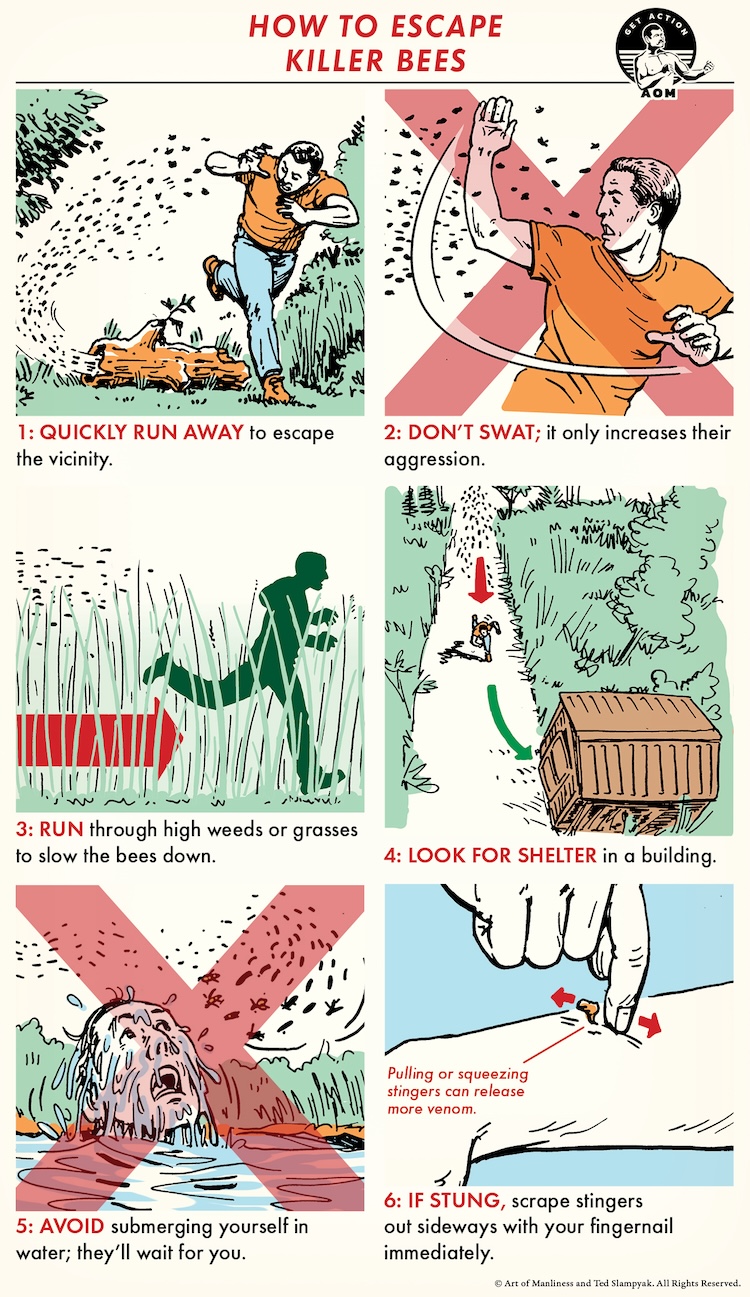I ran across this while surfing the net a bit, With spring coming the bees, wasps and hornets are more active and you will start seeing them and if you ain't careful, you will bungle into them, especially with the lawnmower.....Ask me how I know, LOL. As far as the Wasp nest goes, I use the 10 foot sprays...at NIGHT, and I haul a$$. I am a lot of things...but stupid, ain't one of them. I try to not disturb them unless they go after me first, then I will eradicate them. I thought this was a useful article. I shamelessly clipped this from "Art of Manliness"

An important part of manhood has always been about having the competence to be effective in the world — having the breadth of skills, the savoir-faire, to handle any situation you find yourself in. With that in mind, each Sunday we’ll be republishing one of the illustrated guides from our archives, so you can hone your manly know-how week by week.
In 1978, The Swarm premiered in theaters across the country and illustrated the raw, destructive capabilities of bees. In the film, starring a young Michael Caine, swarms of bees crash helicopters, derail trains, and wreak havoc on communities. If that sounds ridiculous, it was, but then again, these were not just any bees. These were killer bees.
In reality, when people talk about killer bees, they’re referring to the Africanized honeybee. Developed in the 50s, the Africanized honeybee is a hybrid of Western honeybees and East African honeybees. The purpose of this experimental cross-breed was to increase honey production. But in 1957, swarms of the bees escaped quarantine in Brazil and began working their way toward North America. Today, they can be found throughout the Southwest (as well as Florida) and are spreading a little more each year.
These hybrid pollinators got their “killer” name because of their extremely defensive behavior. They sting more and chase farther, in some cases following people for more than a quarter of a mile. As individual bees, they’re no more venomous than an average honeybee. But as a group, killer bees can become a deadly force; hundreds of their stings will inject enough venom to overwhelm the body’s vital functions.
Killer bees make their nests in all the typical places you’d expect: in rotten logs, beneath house eaves, and underground. They’re typically most aggressive in spring when making new hives. It’s at this time of the year when they tend to move in large swarms. If you find yourself in their path, or accidentally disrupt their hive, here’s what to do.
It was one of our biggest kicks as boys in the Ozarks to find a wasp,yellow jacket or hornets nest and figure out how to destroy it. Painful sometimes.
ReplyDeleteWell, I'm screwed. I can Quick! Fall down and assume the fetal position, but running stopped being a thing about fifteen years ago.
ReplyDeleteTwo years ago one of these stung me. He went for my eyes. He bounced off my sunglasses and circled around to try again. I waved him off but he got me just above my eyebrow. When he stung, my eye watered up tremendously. The right side of my forehead exploded in pain.
ReplyDeleteThank God no lingering effects on my sight. It still hurts sometimes. When I've been in the sun for a bit, it gets as bright red as a fresh burn. I was walking along and I guess I got too close.